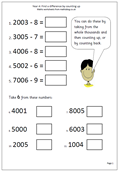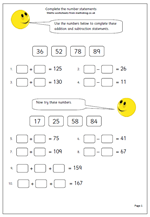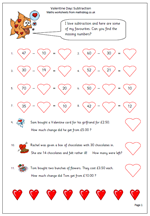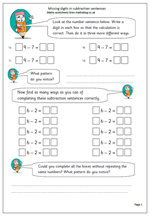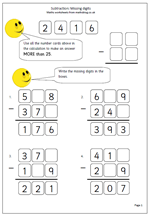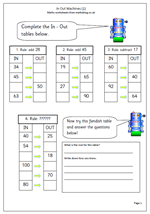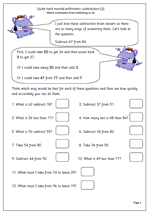This Year 4 maths worksheet can reveal a great deal about how children deal with numbers. It looks at finding differences crossing the thousands boundary.
Let’s look at 3005 – 8 which is easier to do mentally than on paper.
There are several ways that this can be done.
1. Count down, one at a time, 8 from 3005, saying each number as you go. Fingers may be held up on each count down until 8 is reached.
3004, (1), 3003 (2), 3002 (3), 3001 (4), 3000 (5), 2999 (6), 2998 (7), 2997 (8)
2. A different way is to take the 8 from 3000, then add 5.
3000 – 8 = 2992
2992 + 5 = 2997
3. A third way is to take 5 off the 8 leaving 3.
Then take 3 off 3000 = 2997
It is well worth talking to children about how they do this kind of question and what strategies they employ. Much will depend on their knowledge of number.
If this question ia attempted using the standard written method for subtraction there are many children who will get confused with the adjustments that have to be made (crossing out tens and borrowing etc).
